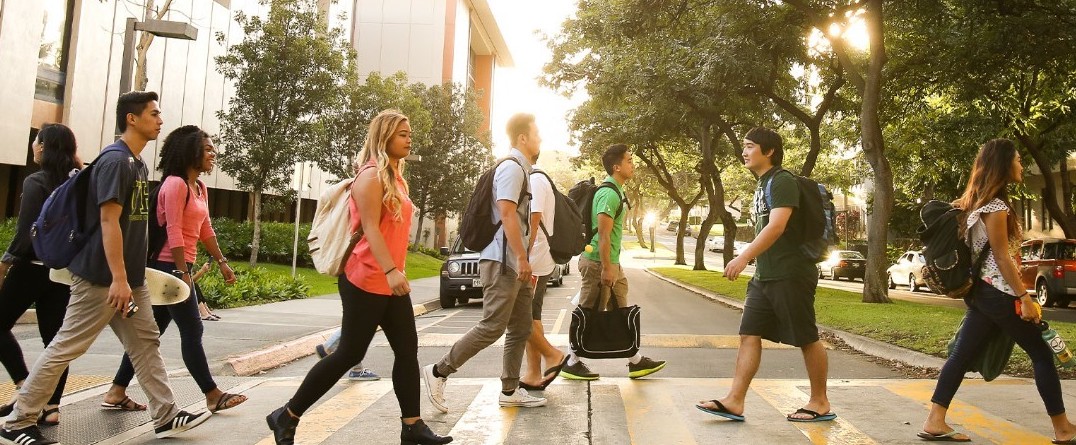Editor’s note: ImpactAlpha has partnered with HIP Investor to highlight upcoming bond issues with social and/or environmental significance. Disclaimer: Nothing in this post or on ImpactAlpha.com shall constitute an offer to sell or solicitation of an offer to buy bonds.
- CUSIP bond identifier: 275282RG8
- Issuer: East Side Union High School District (Santa Clara County, California)
- Impact entity rated by HIP: East Side Union High, CA
- Muni sector: Education: K-12 School Districts
- Closing date: May 18, 2023
- Bond amount: $47,000,000
- Coupon Rate: 5%
- HIP Impact Rating: 63.5% connoting “net positive” (higher than 50 on 100-point scale)
- Opportunity Zones in proximity to the issuing entity: 13, encompassing a population of 54,770, or 2.9% of total population for Santa Clara County, CA
- Selected UN SDG Ratings by HIP (on 100 point scale):
- 73% SDG 1 No Poverty (to cure income gaps)
- 81% SDG 2 Zero Hunger (from schools serving meals)
- 53% SDG 4 Quality Education (linked to the core mission)
- 100% SDG 7 Affordable and Clean Energy (moving to solar)
- 73% SDG 8 Decent Work and Economic Growth (training future workers)
- 56% SDG 10 Reduced Inequalities (closing the gaps)
- 69% SDG 11 Sustainable Cities and Communities (self-sustaining cities)
Santa Clara ed-tech bond
East Side Union High School District in Santa Clara County, Calif. is issuing a $47 million “Ed-Tech Bond ®,” part of a series of bonds authorized by the district’s registered voters.
Short duration
Ed-Tech Bonds are a trademarked concept by independent financial advisory firm Dale Scott & Company that propose low-interest-rate, short-duration bonds, aimed at financing technological equipment for schools. These bonds are a strategic component to the district’s Educational Technology Plan, which aims to integrate the use of technology across the curriculum, for the purpose of empowering students to be ready for work challenges and industries of the future.
A key feature of Ed-Tech Bonds is their short duration which can avoid having a mismatch between the relatively short useful life of educational technology (2 to 5 years) and long-term maturity of general purpose bonds, resulting in lower financing costs and more frequent purchases of up-to-date technology.
Some technology (like laptops) can be classified as an operating expense because their useful life is sometimes one to two years according to accounting professionals; other technology expenses can be capitalized on the balance sheet, and depreciated over its useful life. Both are usually less than 30-year long-term bonds, so these short-term muni bonds can bridge the funding gap. This bond’s duration is 7 years – and is expected to be repaid by an increase in property taxes.
Diverse school district
East Side Union High School District is the largest high school district in Northern California, with a student population of 21,844 during the 2021-22 school year. It consists of 11 traditional and 5 alternative education high schools, 12 charter schools and one school dedicated to adult education. The district’s overall demographics reflect the diversity of the community it serves, with nearly 46% of the student body identifying as Hispanic or Latino, 43% Asian, 5% white, 3% identifying as belonging to two or more races, and nearly 2% Black or African American.
During the same school year, 18.5% of the students at East Side Union High were English Language Learners, compared to an 11% student weighted average across all 18,013 school districts rated nationally by HIP Investor. The median household income for this district was $111,855 in the 2017-2021 period, which was well above both the California state ($78,672) and national ($64,994) averages. Despite above average levels of median household income, 45.5% of students were socioeconomically disadvantaged, which means that they either qualified for a free or reduced lunch, or their parents or guardians had not obtained a high school diploma.
HIP analysis of school districts
HIP Investor analyzes the impact of 18,013 school districts nationwide, which operate 99,390 schools, and enroll 49,664,907 students. K-12 collected data includes 36 data points on student performance across diverse student groups, demographics, school financial management, and solar capacity. Entities in the K-12 education sector are rated across 10 material metrics which constitute the five HIP Pillars of Health, Wealth, Earth, Equality and Trust.
The quality of education achieved is central to HIP’s impact assessment. HIP’s research concludes that smaller classrooms lead to enhanced student performance, although there has been much debate on this topic in both the research and practitioners communities, as well as among policymakers. Smaller classrooms translate to higher funding needs, and this is often a point of contention.
The average student-to-teacher-ratio across U.S. public K-12 schools was 16:1 in 2019. Data collected by HIP for the 2021-22 school year shows a student-weighted average of 16:1 for the overall universe, whereas the student-to-teacher ratio for East Side Union High was 23:1 in the same period. This translates to a lower HIP rating for the district compared to its peers, as students are not benefitting from larger class sizes.
Although school districts in wealthier areas tend to have better performance, this is not always the case, and HIP ratings show that there is wide variation in performance when comparing lower and higher income areas. School districts with high proportions of low-income students can achieve higher graduation, math and reading proficiency rates than some school districts that cater to high income earners. At HIP, we consider school districts that thoughtfully and effectively use their funds to be higher-impact investments, and their effectiveness translates to better student outcomes.
Before and after Covid
While the Department of Education warns that post-Covid educational assessment data might not be as accurate as data collected pre-Covid, East Side Union High demonstrates an increase in performance as measured by the amount of students who are proficient in Mathematics and Reading/Language Arts (RLA). Pre-Covid data (SY 2018-2019) shows a 41% math proficiency, and a 62% RLA proficiency, while post-Covid data released in the Fall of 2022 shows 53% math proficiency and 70% RLA proficiency.
This is very good news for this school district, considering that post-Covid assessment data shows a dramatic decrease in proficiency rates across the country, in some cases even indicating a loss of two decades of performance gains.
Solar in schools
HIP Investor’s assessment of impact includes a bonus metric for K-12 school districts that are using solar energy to power their operations. In 2011, East Side Union High launched the largest solar energy program in the U.S. aimed at saving the district $43 million in energy costs over the lifetime of the program. Immediate results were a 55% reduction in energy use, the creation of 85 union jobs, including teachers, and the integration of the project into the existing curriculum and internship programs.
Currently, 8,409 schools across 2,538 school districts have installed solar panels and have experienced a multitude of benefits that go beyond energy savings, and include workforce development, STEM education, and community solar initiatives. East Side Union High is a top performer when it comes to solar energy, with a 100% HIP rating for this particular metric.
Investing in future workers
K-12 education is key to the development of talented and skilled workers. In order for students to perform well and retain knowledge, they need educational environments that feel safe and secure, as well as technologically equipped for a more efficient instructional delivery. Students also need the right amount of attention and dedication, as well as affordable food and a level playing field.
Student groups such as English language learners, migrant students, homeless students, students from economically disadvantaged backgrounds, as well as students with disabilities need more resources to bring them up to speed and to the same level of performance and proficiency as students that are not disadvantaged. Policies, funding and planning that focus on delivering equitable education and achieving equitable student outcomes are fundamental for the healthy development of diverse and resilient communities.
Net positive
East Side Union High has a net positive Overall HIP Rating of 63.5%, driven by above average educational outcomes; management of its financial resources; provisions for students with disabilities, English language learners, lower income students; and by its commitment to and implementation of solar energy.
In addition, the school district’s mission and outcomes are in alignment with several UN Sustainable Development Goals (UNSDGs), such as SDG 1 No Poverty (73% rating), SDG 2 Zero Hunger (81% rating), and SDG 7 Affordable and Clean Energy (100% rating).
Srdana Pokrajac is director of impact ratings and outreach at HIP Investor.
HIP Investor Inc. is a state-registered investment adviser in several jurisdictions, and HIP Investor Ratings LLC is an impact-ratings firm evaluating impact and ESG on 123,000 municipal entities, 250,000 muni-bond issuances, and 12,000 corporates for equities and bonds. HIP Impact Ratings are for your information and education – and are not intended to be investment recommendations. Past performance is not indicative of future results. All investments are risky and could lose value. Please consult your investment professionals to evaluate if any investment is appropriate for you, your goals, and your risk-return-impact profile.











